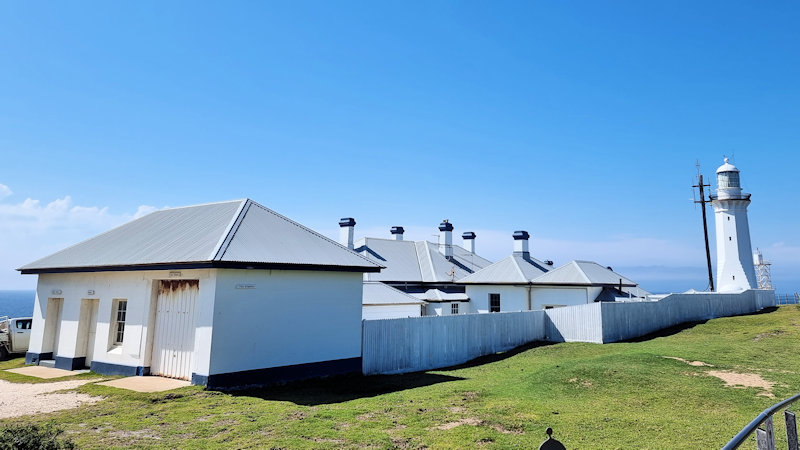Getting There
Access to the Green Cape Lighthouse is via a scenic drive through Beowa National Park, although the last stretch requires navigating an unsealed road. During our visit, the road was in excellent condition (March 2025) and was suitable for a 2-wheel drive vehicle. A carpark near the lighthouse provides plenty of parking.
Before reaching the lighthouse, there is a small viewing platform which provides spectacular views over Disaster Bay.
Historical Background
Constructed between 1881 and 1883, the Green Cape Lighthouse is one of the earliest lighthouses in the region. Commissioned by New South Wales Maritime authorities, it was built to address the increasing need for navigational aids along the treacherous waters of the Tasman Sea. Notorious for shipwrecks, the lighthouse provides safety and security for maritime traffic near Cape Green.
Engineered by James Barnet, one of Australia’s most renowned colonial architects, the lighthouse was the first concrete lighthouse in the country. Its design was innovative for the time, because it combined functional durability with aesthetic elegance. The structure stands 29 meters tall, with a light visible from up to 19 nautical miles away.
In 1992 a solar powered lens on a modern steel tower was constructed next to the historic tower, and the light was officially turned off on 17 March 1992.
Architectural Features
The Green Cape Lighthouse boasts a distinctive octagonal tower, crafted from concrete and painted white to ensure visibility both day and night. Its lantern room houses a Fresnel lens, which was originally powered by kerosene but was converted to electricity in 1962. The surrounding keeper’s cottages, built to house the lighthouse staff, feature Victorian architecture and are now used for visitor accommodations and museum space.
Nearby Attractions
Beowa National Park hold several other interesting attractions close to the lighthouse including the Bittangabee Storehouse, Boyd’s Tower and Davidson Whaling Station. Of course, the area also has spectacular beaches and bush walking. A fee is payable on entry to Beowa National Park. Most of the carparks we stopped at had payment stations.




Our photos are available for purchase on
Other Places to Visit in New South Wales
To see what else there is to do in New South Wales, click here.

Leave a Reply